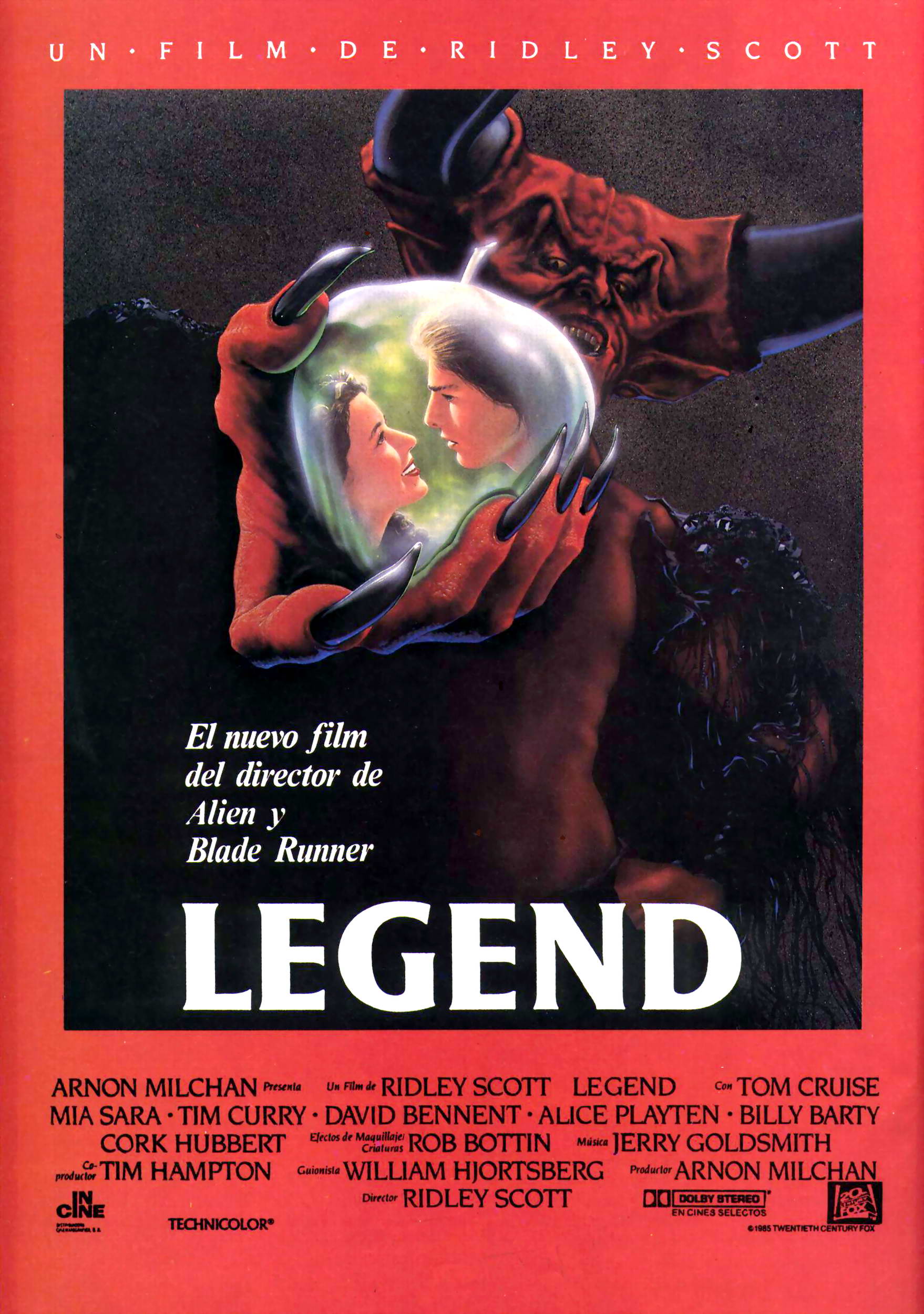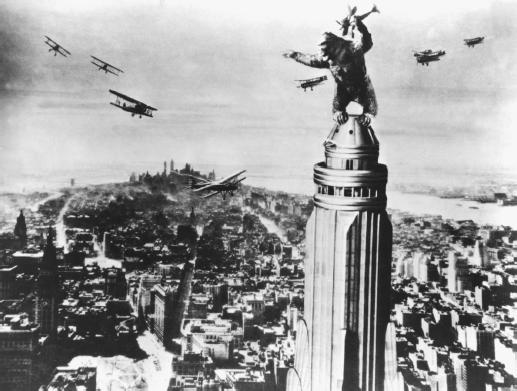Fig. 1. Avatar poster.
Avatar is a visual feast and a narrative famine. Its plot can be summarised as ‘Pocahontas in space’, so this review will focus largely on the production design with occasional narrative references where necessary.
The film’s setting, a moon called Pandora, is lush and diverse in animal and plant life. Among these are the Na’Vi, a humanoid, sentient species that is being oppressed by humans seeking to strip mine the moon for a mineral called ‘unobtainium’. The first thing one notices about Pandora is that it is largely blue – the Na’Vi are blue, many of the plants are blue or blue-green, and after dark the Pandora rainforest lights up with blue and pink bioluminescence. This heavy use of blue makes the setting seem more alien; blue is very rarely encountered in nature on Earth, even less so in such vast areas of plant life. Unfortunately, this diversity is somewhat limited in its imagination; “What the film doesn't offer is any real imaginative leap. Think of any fiction set in a fantasy Eden, and you're likely to have dragon-like dinosaurs, massive awe-inspiring trees, the odd bizarre insect. They're all here, but rarely to surprising effect.” (Romney, 2009).
Fig. 2. I'kran close-up.
Pandora is presented as a paradise, particularly the Na’Vi culture which reveres nature and abhors unnecessary death. The Na’Vi are shown as infinitely more wise than humans in being abel to communicate with nature and the film is utterly unsubtle in reminding us that, bar a few exceptions, humans are murderous savages compared to these bastions of morality – “There’s never any doubt that Cameron considers the Na’vi to be more human – freer of spirit and emotion, more connected to the world around them” (Hewitt, 2009).
In regards to the Na’Vi, they walk the line between being human and animal. They embody both the wisdom of humanity and the purity of nature, and in doing so are suggested to transcend both. The use of cat-like features, especially in the face, tail and stance, implies grace and cunning, while the braid (a protrusion which effectively acts as a neural USB jack allowing the control of animals, raising the question of whether the Na’Vi subjugate nature just as much as the humans, only in a different way) is reminiscent of popular conceptions of Native Americans. The clothing, as well, is incredibly Native American, which serves to both make the Na’Vi familiar and jolt the viewer out of their suspension of disbelief – ‘why do these aliens, on a faraway planet with little to no knowledge of human culture, and which evolved completely separately, look so human?’.
The emphasis on making the Na’Vi humanlike has an unfortunate side-effect. All the creatures on Pandora except the Na’Vi have six limbs, whereas the Na’Vi only have four. In the wealth of supplemental material this is rationalised as the two upper limbs fusing, but this explanation is unsatisfying. For a species as arboreal as the Na’Vi, four grasping limbs would be nothing but an advantage. Instead, this is a clear attempt to humanise the Na’Vi regardless of the logic of doing so.
Fig. 3. Jake & Neytiri.
In contrast, the sharp angles and constant presence of heavy industry in the human-held areas of Pandora are jarring after the beauty and peace of the forest, a fact used to make the viewer resent the humans for encroaching upon it. In fact, apart from a single irascible warrior, the film never shows any of the unpleasant sides of Na’Vi life, and in doing so implies that there aren’t any.
This black-and-white thinking shows through in the production design, presenting the Na’Vi as beautiful and flawless, one with nature, while showing humanity as part of a violent, smoke-spewing machine bent only on personal gain and the destruction of anything that opposes it. “It’s an achievement to make 3D look as good as it does here, but that counts for little if the characters are all in 1D. The film is a triumph of effects over affect. “ (Sandhu, 2009)
Illustration List
Cameron, J. (2009). Fig. 1. Avatar poster. http://storageeffect.media.seagate.com/files/2010/03/avatar-movie-poster.jpg (Accessed on 14/12/11)
Cameron, J. (2009). Fig. 2. I'kran close-up. http://www.iwatchstuff.com/2010/02/03/avatar-beast.jpg (Accessed on 14/12/11)
Cameron, J. (2009). Fig. 3. Jake & Neytiri. http://fcdn.filmonic.netdna-cdn.com/wp-content/uploads/2009/10/avatar-still.jpg (Accessed on 14/12/11)
Bibliography
Hewitt, C. (2009) Empire Magazine. http://www.empireonline.com/reviews/reviewcomplete.asp?FID=133552 (Accessed on 14/12/11)
Romney, J. (2009). The Independent. http://www.independent.co.uk/arts-entertainment/films/reviews/avatar-james-cameron-163-mins-pg-1845569.html
Sandhu, S. (2009). The Telegraph. (Accessed on 14/12/11) http://www.telegraph.co.uk/culture/film/filmreviews/6832593/Avatar-full-review.html (Accessed on 14/12/11)



















